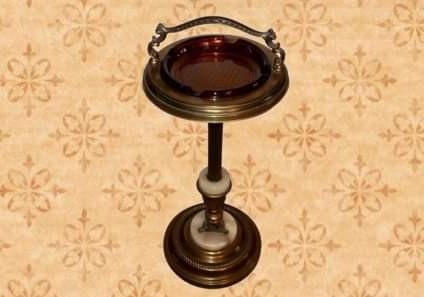
ADVERTISEMENT
The Elegance and Utility of Antique Salvers: A Reflection of Historical Tableware
Introduction
Throughout history, tableware has not only served a functional purpose but has also been a symbol of artistry and social status. Among the varied assortments of historical tableware, antique salvers stand out for their elegance and utility. This article explores the design, use, and cultural relevance of an antique salver, a type of serving tray that has been a part of elite dining and social rituals since its inception.
Main Body The salver pictured is an exquisite example of craftsmanship from the past. Typically made from precious metals like silver or, as seen here, with a polished wood and ornate metal combination, salvers were used to present everything from letters and cards to food and drinks. The design features of the salver include a delicate, raised rim and a sturdy pedestal base, which elevates the tray for prominence and practicality.
The functionality of such a salver extends beyond mere aesthetics. It was designed to be a portable surface from which items could be presented or served, enhancing the ease of distribution at gatherings. In historical contexts, the salver was often used in formal settings to serve tea, pastries, or cocktails, showcasing the host’s wealth and sophistication.
Moreover, the salver plays a significant role in the rituals of hospitality. It was customary in many cultures for guests to be presented with a salver bearing refreshments or personal items as a sign of welcome and respect. This practice underscores the salver’s role not just as a piece of tableware but as a part of the social fabric, facilitating interaction and ceremonial hospitality.
ADVERTISEMENT
Culturally, the presence of a salver such as this one in a household indicated wealth and a keen interest in decorum and presentation. It reflects the historical importance placed on dining etiquette and the social rituals of the upper classes, particularly in Europe during the 17th and 18th centuries. Collectors and historians value these pieces not only for their beauty and craftsmanship but also for their ability to connect us to the social customs of bygone eras.
Conclusion Antique salvers, with their rich history and beautiful design, are more than just relics; they are a window into the past, offering insight into the social and cultural practices of earlier times. The salver discussed in this article not only served practical purposes but also played a pivotal role in the art of hospitality, embodying the elegance and formality of historical social settings. As such, it remains a cherished item among collectors and a fascinating subject for those interested in the interplay between utility and artistry in tableware.




